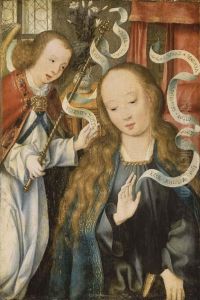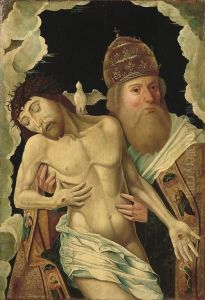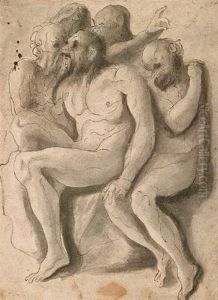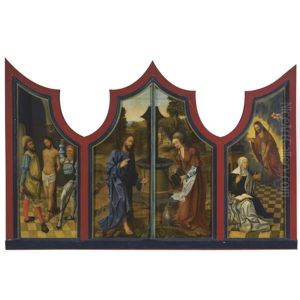Jan Joest Paintings
Jan Joest, also known as Jan Joest van Kalkar or Jan Joest van Calcar, was a notable Dutch painter active during the transition from the late Gothic to the early Renaissance period. He was born around 1455, likely in the town of Kalkar, in what is now North Rhine-Westphalia, Germany. Despite being Dutch by origin, his work and life were deeply intertwined with the German art scene of his time, reflecting the fluidity of cultural and artistic borders in the late Middle Ages and early Renaissance in Northern Europe.
Jan Joest is best remembered for his detailed and emotive altarpiece in the Nikolaikirche (St. Nicholas Church) in Kalkar, which is considered his masterpiece and a significant contribution to Northern Renaissance art. Completed around 1505-1508, this work is notable for its innovative use of perspective and light, as well as its deeply human approach to religious subjects. The altarpiece consists of over thirty panels depicting scenes from the life of Christ, showcasing Joest's skill in narrative storytelling and his ability to imbue his figures with a sense of realism and emotional depth.
Little is known about Joest's early life and training. He is believed to have traveled to Italy, as evidenced by the Italianate influences in his work, particularly the use of perspective and his studies of light, which were revolutionary for Northern European art of the period. These elements suggest that he might have been exposed to the works of contemporary Italian masters, which would have significantly shaped his artistic development.
Throughout his career, Jan Joest demonstrated a mastery of both the technical aspects of painting and the emotional expressiveness that characterizes the best of Renaissance art. His works are characterized by their detailed execution, sophisticated use of color, and the ability to convey complex religious themes with humanity and compassion. Despite the fact that not many of his works have survived, those that remain have cemented his reputation as an artist of great skill and sensitivity.
Jan Joest's influence extended beyond his immediate geographical region, impacting the development of painting in the Low Countries and the Rhineland. He died in 1519, leaving behind a legacy that would continue to inspire artists in the generations that followed. Today, his masterpiece in Kalkar remains a key work for understanding the transition from Gothic to Renaissance art in Northern Europe, and Joest himself is celebrated as an important figure in the history of Dutch and German Renaissance painting.



